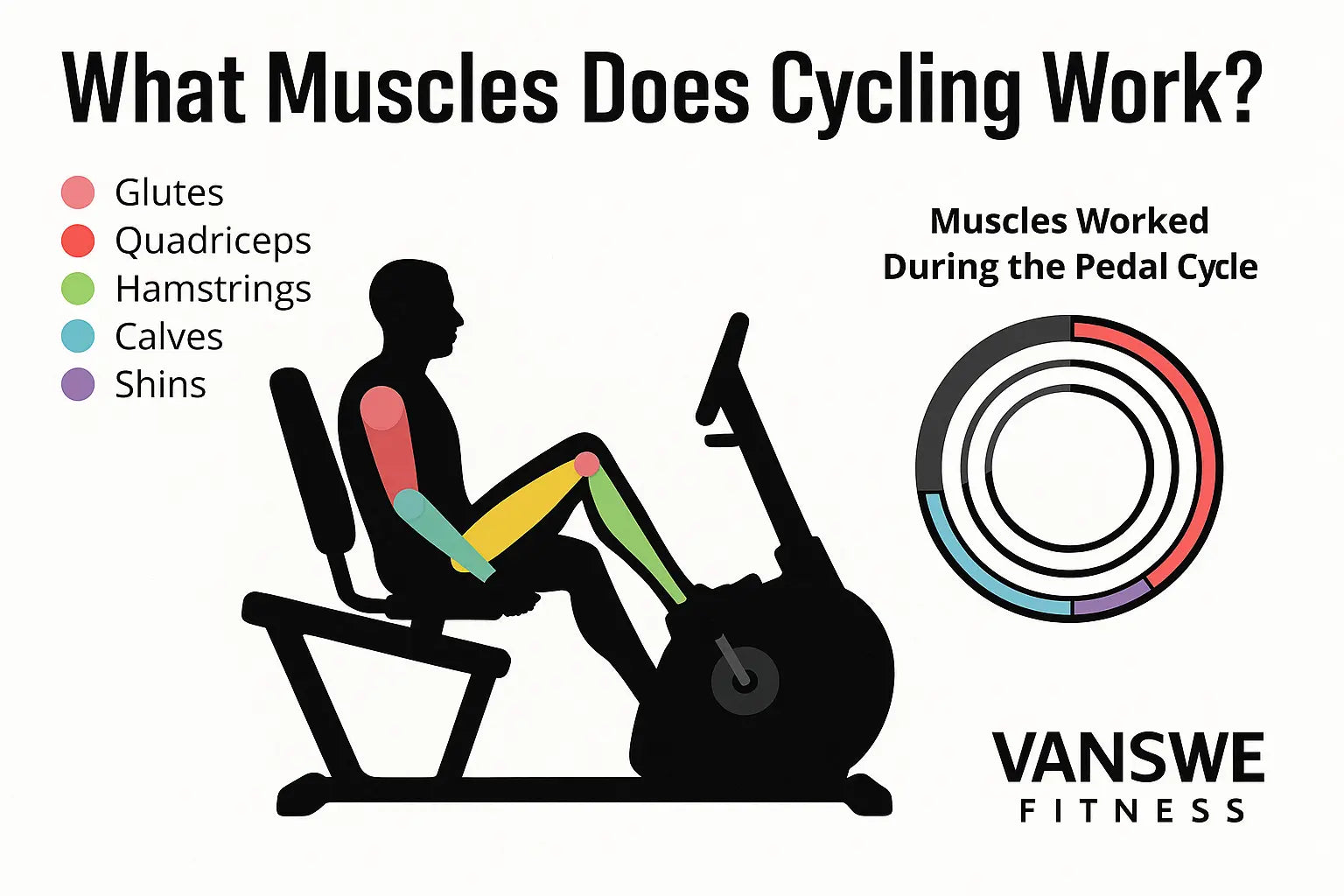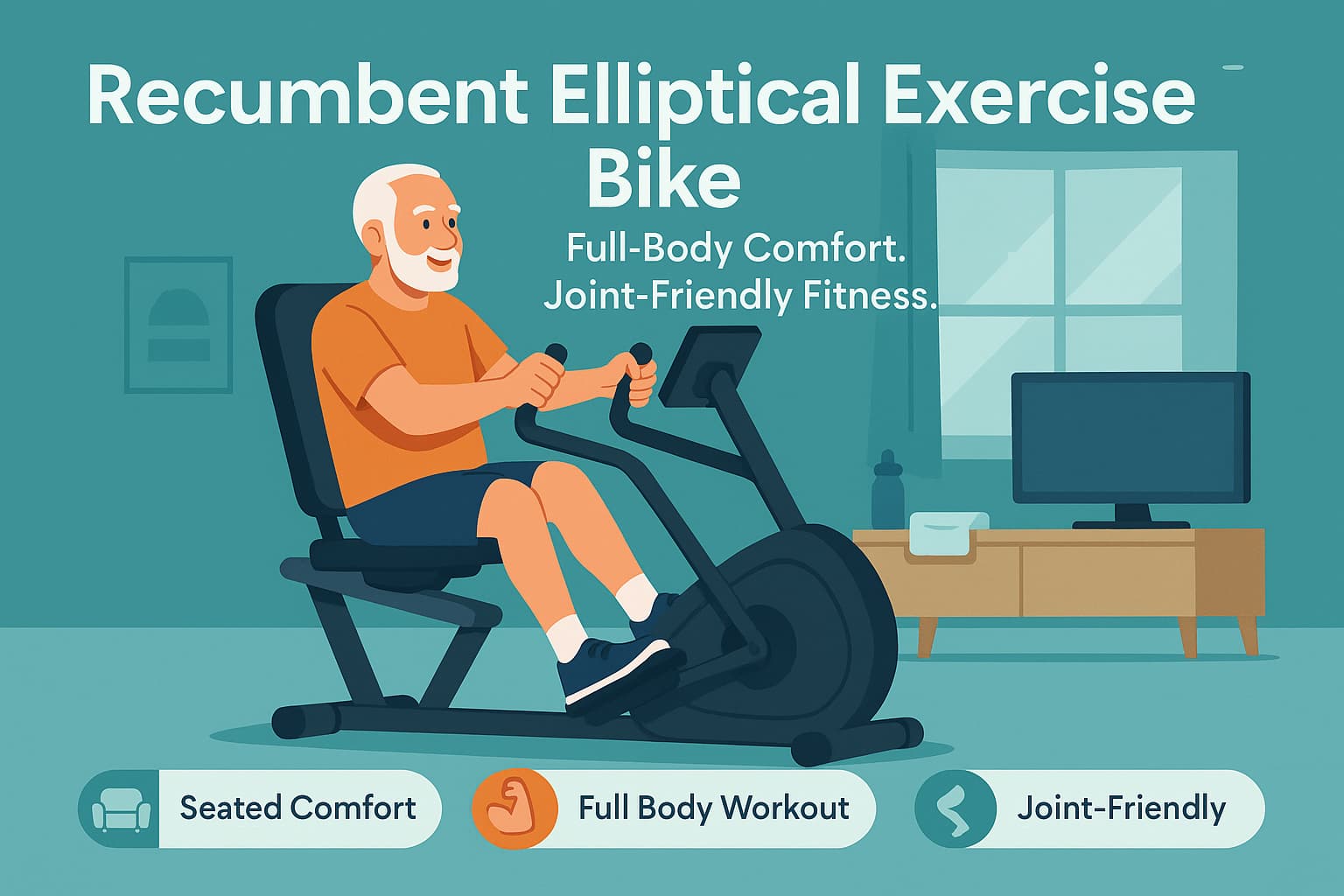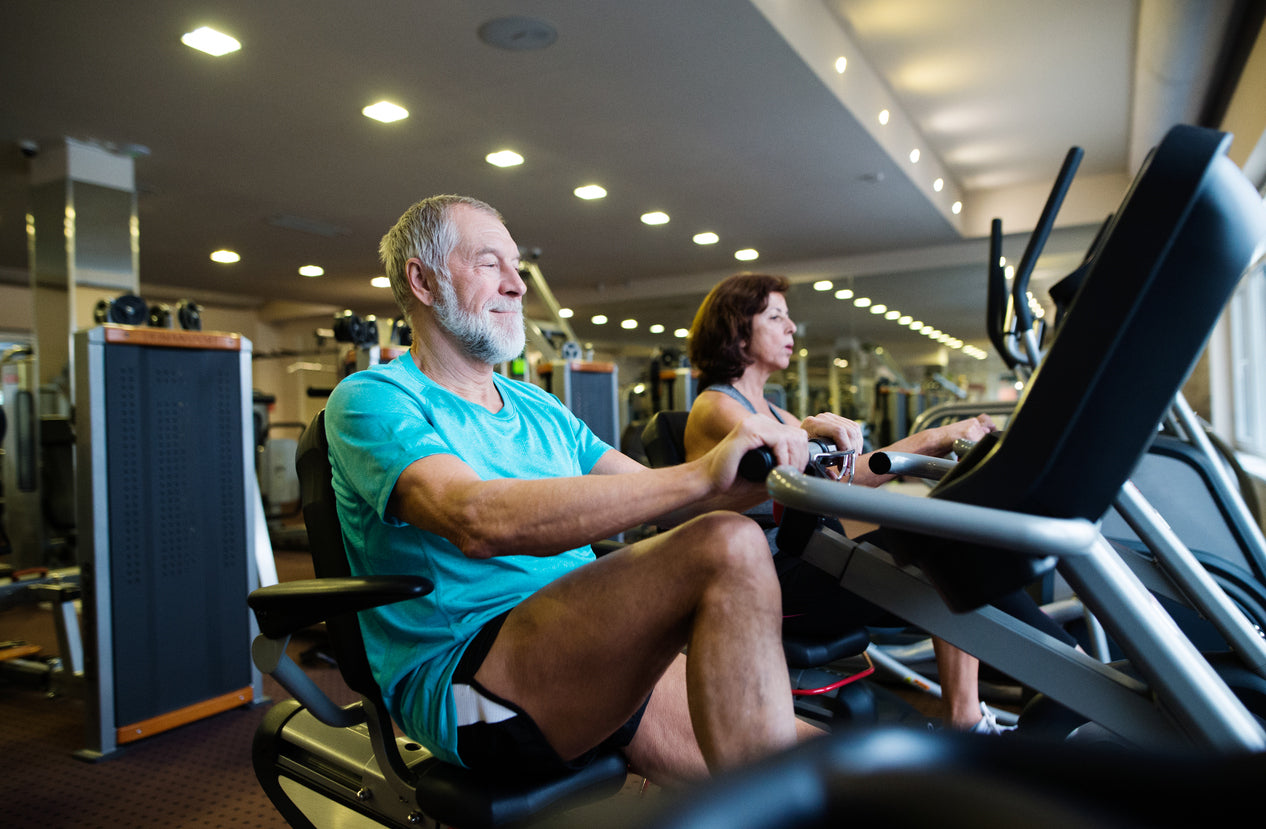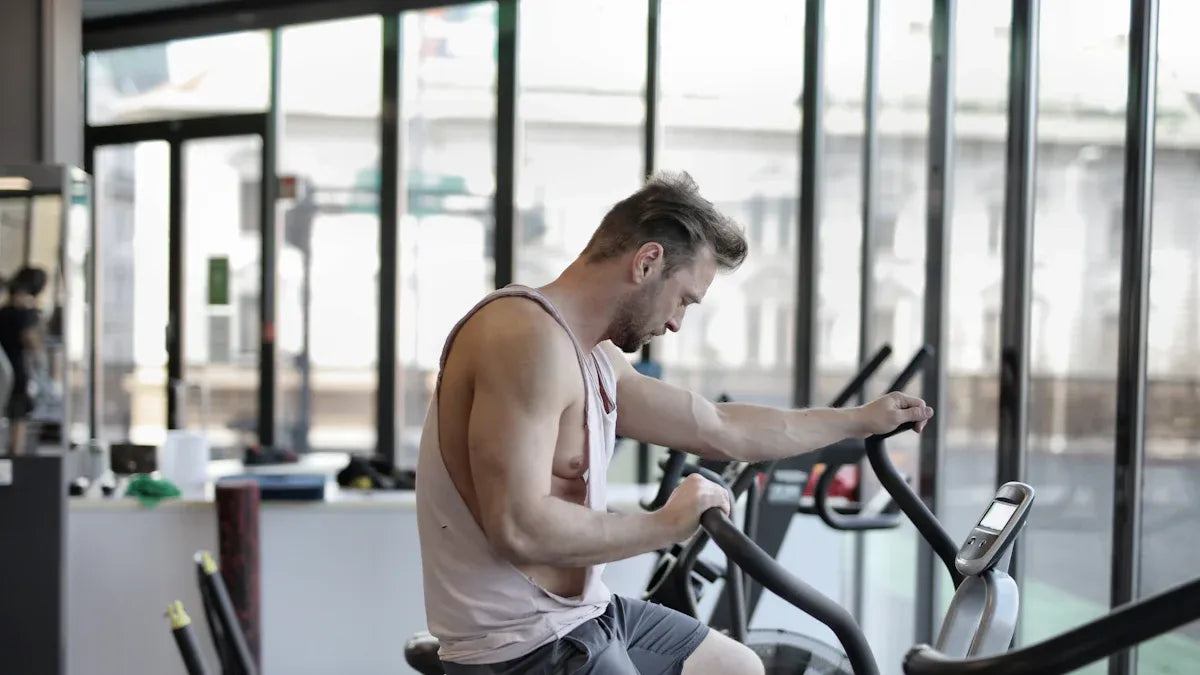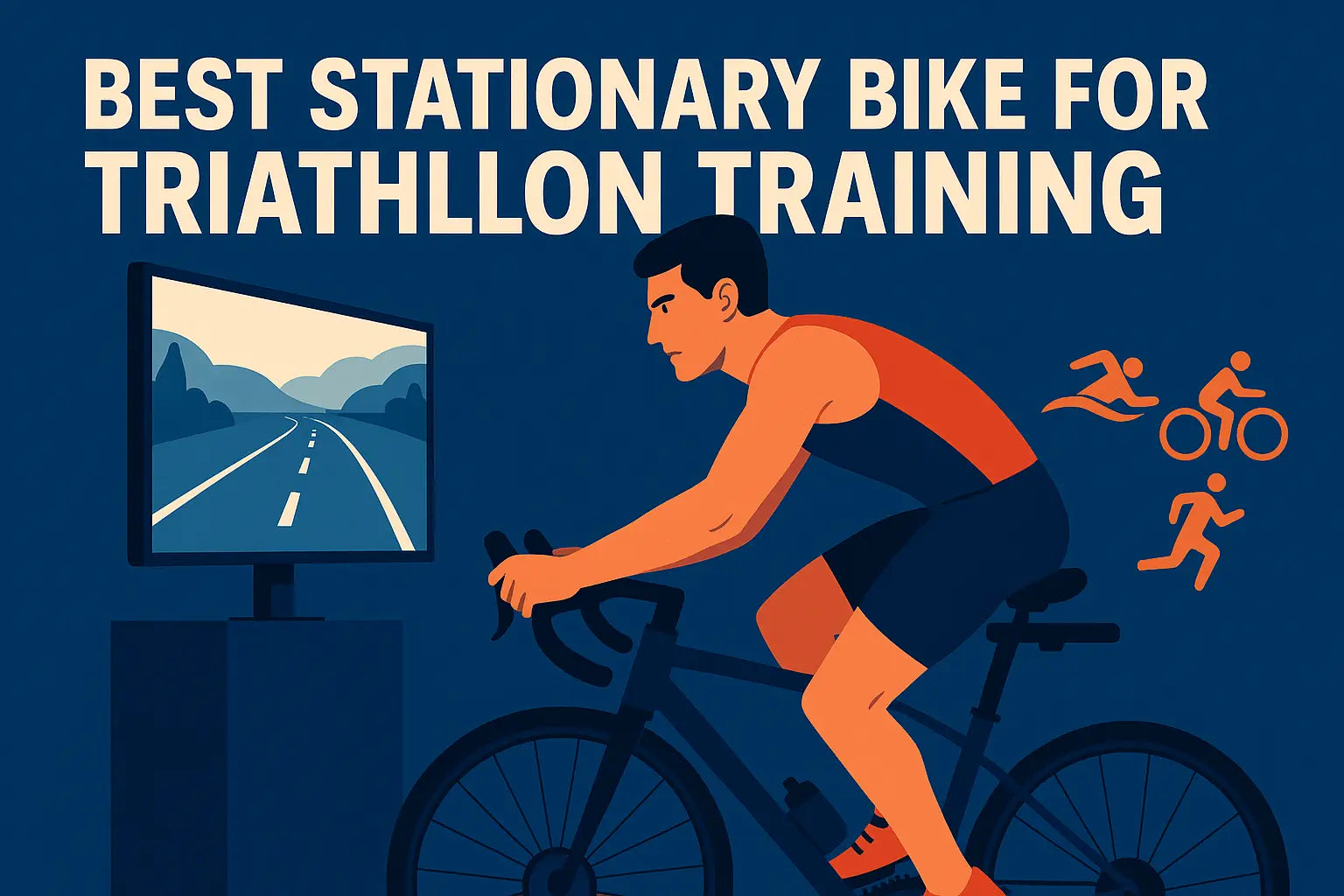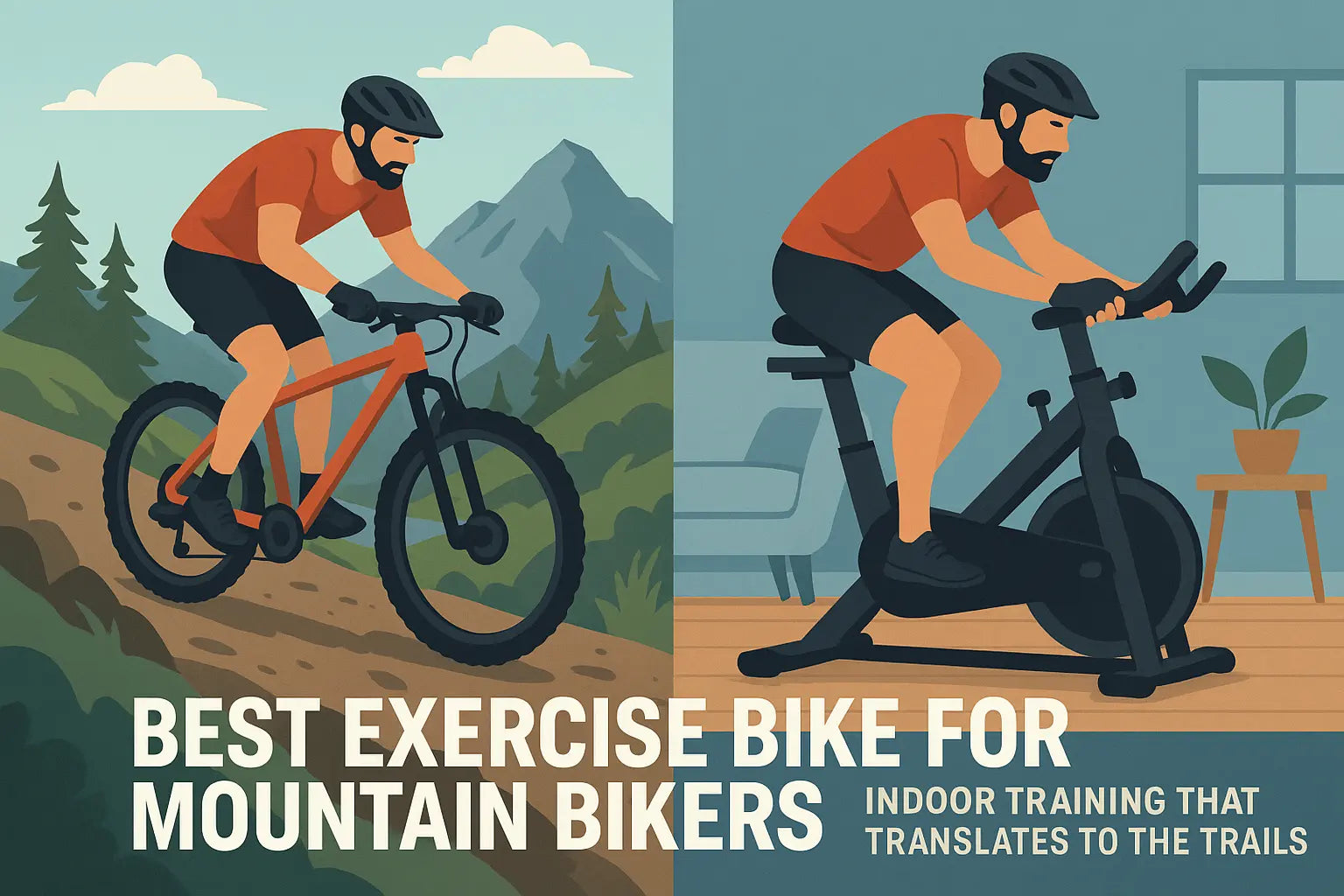Riding a stead recumbent bike may feel easy on the joints, but it delivers real muscle engagement. A recumbent bike is a type of stationary bike with a reclined seating position and a larger seat, designed for a comfortable workout. It’s ideal for a low impact workout suitable for any fitness level. In this guide, we’ll walk you through the key muscles a recumbent bike works and explain how each one contributes to your workout.
Recumbent Bike Muscles Worked
A recumbent bike primarily works the quadriceps, hamstrings, glutes, calves, and tibialis anterior, and secondarily engages the hip flexors, lower back, and core. According to a study published in Clinical Biomechanics, its reclined position and front-mounted pedals offer a low-impact way to strengthen the lower body, improve balance and prevent falls.
Recumbent bike benefits are numerous: recumbent bikes provide a low-impact cardio workout that improves cardiovascular fitness and supports a wide range of fitness goals and fitness levels. As a type of exercise equipment and cardio equipment, recumbent bikes are often compared to upright stationary bikes, upright bikes, and treadmills. While upright bikes and some other exercise bikes can offer a more total body workout by engaging upper body muscle groups, recumbent bikes focus on comfort, less stress on the joints, and are generally more suitable for small home gyms due to their compact design.
Recumbent bikes are ideal for rehab patients, individuals with joint pain, knee issues, or cardiac limitations, as they place less strain and less stress on the knees, joints, and cardiovascular system. The recumbent bicycle's ergonomic design supports bodies of all body weights and provides extra comfort for the rider with a larger seat and reclined seating position.
A workout on a recumbent can help with burning calories, weight loss, and improving muscular strength, especially in the leg muscles. Custom workout options allow users to adjust resistance for high intensity or low impact sessions, helping to burn more calories and tailor routines to individual needs.
While recumbent bikes mainly target lower body muscle groups, upright bikes and some other exercise bikes can provide a more comprehensive body workout, including the upper body. Recumbent bikes are a good choice for those seeking to improve cardiovascular exercise, cardiovascular system health, and overall physical activity. They are a safe and effective option for a variety of users, including seniors, beginners, and those recovering from injury.
Source: Clinical Biomechanics study by Gregor et al. (2002), “Lower extremity general muscle moment patterns in healthy individuals during recumbent cycling” [1]

1. Quadriceps
The quadriceps are the most actively engaged muscles during a recumbent bike ride. They contract to extend your knee as you push the pedal forward.
2. Hamstrings
These muscles assist in bending the knee and work during the upward phase of the pedal stroke. Though secondary to the quads, they play an important balancing role.
3. Glutes
Your gluteal muscles are engaged when pushing against resistance. A higher resistance setting on the bike can enhance glute activation.
4. Calves
As you pedal, your calf muscles work to stabilize and propel the foot, especially at the bottom and top of the pedal stroke.
5. Tibialis Anterior
Often overlooked, this muscle helps flex the ankle and aids in lifting the foot during the pedal's return phase.
6. Core
While not as engaged as in upright cycling, your core muscles still play a role in maintaining posture and balance, especially during longer sessions.
7. Hip Flexors
These muscles assist in raising your thigh toward your torso during the pedal stroke, particularly when cycling at a faster pace or higher resistance.
8. Lower Back Muscles
These help stabilize your torso and keep your spine aligned. Thanks to the recumbent bike's supportive design, stress on these muscles is minimal but present.
🛒 Looking for a Recumbent Bike?
FAQ
Does Recumbent Bike Work Abs?
Yes, a recumbent bike can engage your abdominal muscles—particularly your deep core stabilizers—but not in the same way as targeted ab exercises like crunches or planks.
When you maintain an upright posture and avoid leaning too far back against the seat, your transverse abdominis and obliques activate to keep your torso stable. This is especially true during higher resistance cycling, which requires greater balance and control.
However, because the bike provides back support, the abdominal activation is more isometric (static contraction) than dynamic. In other words, your core works to hold your posture rather than flex or twist your spine.
Source: Annals of Nutrition and Metabolism study by Skrypnik et al. (2015), "Effects of Endurance and Endurance Strength Training on Body Composition and Physical Capacity in Women with Abdominal Obesity" [2]
Related Article: Does Recumbent Bike Burn Belly Fat
Does Recumbent Bike Work Glutes?
Yes, the glute muscles—particularly the gluteus maximus—are significantly engaged during a recumbent bike workout. This is especially true when you're pedaling against medium to high resistance.
Due to the recumbent bike form, your legs extend forward rather than downward. This forward push, especially when done against resistance, activates the posterior chain—including your glutes. As you press through your heels and extend your hips during each pedal stroke, the glutes contract to drive the motion.
While recumbent bikes are not a substitute for squats or hip thrusts in terms of glute development, they offer a joint-friendly way to build muscular endurance and tone the gluteal region—ideal for beginners, seniors, or anyone recovering from joint injuries.
Source: Medicine & Science in Sports & Exercise study by Blake et al. (2012), "Muscle Coordination Patterns for Efficient Cycling" [3]
Does Recumbent Bike Strengthen Legs?
Yes, riding a recumbent bike can effectively strengthen your legs—especially when you use consistent resistance and proper technique. The primary muscles involved in leg strengthening are the quadriceps, hamstrings, glutes, and calves, all of which work together to create a powerful and controlled pedal stroke.
Unlike high-impact leg workouts such as running or plyometrics, the recumbent bike offers a low-impact alternative that still challenges your muscles, particularly at higher resistance settings. Over time, progressive overload—gradually increasing duration or resistance—will result in stronger, more toned legs.
Source: International Journal of Sports Physiology and Performance study by Mujika et al. (2016), "Effects of Increased Muscle Strength and Muscle Mass on Endurance-Cycling Performance" [4]
Does a Recumbent Bike Work Your Core?
Yes, a recumbent bike can engage your core muscles, although not as intensely as upright cycling or targeted core workouts. The involvement is more subtle and largely isometric, meaning your abdominal and spinal stabilizers contract to maintain posture without significant movement.
Your transverse abdominis, internal obliques, and erector spinae are especially active in stabilizing your trunk as you pedal—particularly when:
Although you're not twisting or flexing your spine as in traditional ab exercises, these muscles are still recruited to maintain balance and support. Using a recumbent bike with moving handlebars or arm exercisers can further enhance core activation.
If your goal is to improve core strength while protecting your spine and joints, a recumbent bike provides a low-risk, supportive platform that can complement a broader core-training routine.
Source: Journal of Sport Rehabilitation study by Asplund and Ross (2010), "Core Stability and Bicycling" [5]
Does the recumbent bike build muscle?
Yes, a recumbent bike can help build muscle, especially in the lower body. It primarily targets the quadriceps, hamstrings, glutes, and calves. While it doesn't build bulky muscle like strength training, consistent use with moderate to high resistance can improve muscle endurance, tone, and strength over time.
Does a recumbent bike work inner thighs?
A recumbent bike offers limited engagement of the inner thighs (adductors), but they are still slightly activated during pedaling. These muscles help stabilize your legs and guide the pedal motion. For more targeted inner thigh work, additional exercises like side-lying leg lifts or seated adduction machines are recommended.
Conclusion
A recumbent bike workout primarily targets the lower body muscles: quadriceps, hamstrings, glutes, calves, and the tibialis anterior. It also engages supporting muscles such as the core, hip flexors, and lower back. Whether you’re riding for rehab, fitness, or endurance, understanding muscle involvement can help you optimize your recumbent bike workouts and achieve your goals faster.
Related Article: Recumbent Bike Workout Plan: Tailored Routines for Every Fitness Level
Reference
- Gregor, S. M., Perell, K. L., Rushatakankovit, S., Miyamoto, E., Muffoletto, R., & Gregor, R. J. (2002). Lower extremity general muscle moment patterns in healthy individuals during recumbent cycling. Clinical Biomechanics, 17(2), 123–129.
- Skrypnik, D., Bogdański, P., Mądry, E., Karolkiewicz, J., Ratajczak, M., Kryściak, J., Pupek-Musialik, D., & Walkowiak, J. (2015). Effects of endurance and endurance strength training on body composition and physical capacity in women with abdominal obesity. Annals of Nutrition and Metabolism, 66(1), 30–40.
- Blake, O. M., Champoux, Y., & Wakeling, J. M. (2012). Muscle coordination patterns for efficient cycling. Medicine & Science in Sports & Exercise, 44(5), 926–938.
- Mujika, I., Rønnestad, B. R., & Martin, D. T. (2016). Effects of increased muscle strength and muscle mass on endurance-cycling performance. International Journal of Sports Physiology and Performance, 11(3), 283–289.
- Asplund, C., & Ross, M. (2010). Core stability and bicycling. Journal of Sport Rehabilitation, 19(3), 301–308.
Latest Articles

